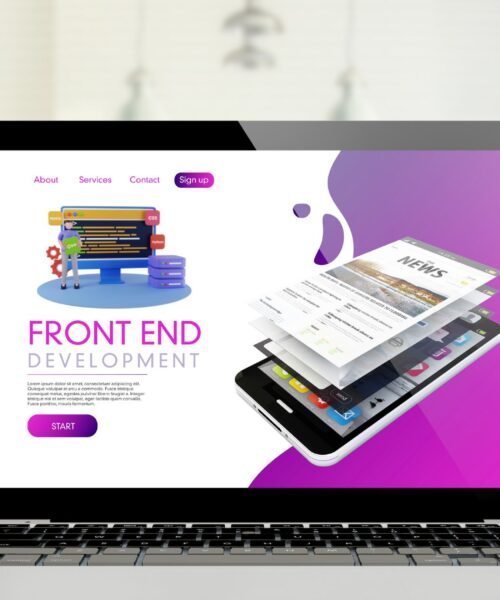
Understanding the Freelance Landscape
Freelancing has transformed the way professionals approach their careers, offering both flexibility and autonomy. At its core, freelancing involves a self-employed individual working on a project-by-project basis for various clients. This mode of work has been around for decades, but the advent of digital technology and global connectivity has significantly accelerated its growth and evolution.
In recent years, there has been a notable shift in the workforce dynamics, with an increasing number of individuals opting for freelancing over traditional employment. One of the key drivers of this trend is the rise of remote work. With companies around the world embracing remote operations, freelancing has become not only more viable but also more accepted as a legitimate career choice.
Current trends in the freelance market reveal a broad spectrum of opportunities across numerous industries. Freelancers today can be found in diverse fields such as writing, graphic design, software development, marketing, and virtual assistance. The barriers to entry have lowered, thanks to platforms such as Upwork, Fiverr, and Freelancer, which connect freelancers with clients seeking various skills.
The freelancing landscape is also shaped by the increasing demand for specialized skills. As businesses undergo digital transformation, there is a heightened need for experts in fields like cybersecurity, data analysis, and digital marketing. This demand allows freelancers to carve out niche markets and attract clients seeking specific expertise.
Additionally, freelancers enjoy the advantage of setting their schedules, choosing their projects, and controlling their workload. This level of flexibility is particularly appealing to those seeking better work-life balance. However, it also requires freelancers to proactively manage their time and work to ensure consistent income streams.
Understanding the nuances of the freelance landscape is essential for aspiring freelancers. By familiarizing themselves with industry trends and available opportunities, they can strategically position themselves in the market and pursue a successful freelance career.
Building Your Skill Set and Portfolio
In the competitive world of freelancing, building a robust skill set and a compelling portfolio is integral to landing your first job. The process begins with identifying the in-demand skills in your chosen industry. Conduct thorough research by exploring job boards, networking with industry professionals, and reviewing market trends. This information will help you pinpoint the exact competencies that are sought after by potential clients.
Once you have identified these key skills, the next step is to hone them through continuous learning. Online courses and certifications are excellent resources to enhance your qualifications. Platforms like Coursera, Udemy, or LinkedIn Learning offer a wide array of courses tailored to different industries and skill levels. By completing relevant courses, you not only expand your knowledge but also acquire official certifications that can be showcased in your portfolio.
Creating sample work is another critical aspect of this process. If you’re a writer, draft well-researched articles or blogs; if you’re a graphic designer, create high-quality illustrations or designs. These samples should highlight your best work and demonstrate your abilities effectively. Even if you haven’t worked with clients yet, these pieces can serve as evidence of your potential.
An organized and attractive portfolio is indispensable for demonstrating expertise to potential clients. Whether you choose to host it on a personal website or a professional networking platform like LinkedIn or Behance, ensure that it is user-friendly and visually appealing. Include a variety of samples that represent the range of your skills, alongside concise descriptions of each piece. Highlight any certifications or courses you have completed and consider adding testimonials or endorsements from instructors or peers.
Your portfolio should be dynamic, evolving as you gain more experience and develop new skills. Regularly update it to reflect your latest work and achievements. Remember, a compelling and professional portfolio is not just a collection of your best work; it is a strategic tool that communicates your expertise to potential clients, increases your credibility, and thus significantly enhances your chances of landing your first freelance job.
Finding Your First Freelance Job
Securing your first freelance job can be a daunting task, but with the right strategies and perseverance, it is entirely achievable. A critical first step is to leverage popular freelance platforms such as Upwork, Fiverr, and Freelancer. These platforms serve as marketplaces, connecting clients with skilled freelancers from a wide array of fields. Signing up for these platforms allows you to showcase your portfolio, highlight your expertise, and apply for relevant job postings that align with your skillset.
In addition to utilizing freelance platforms, networking through social media and professional groups can significantly enhance your chances of landing that first gig. Platforms like LinkedIn, Twitter, and Facebook groups dedicated to freelance professionals provide excellent opportunities for connecting with potential clients and industry peers. Actively participating in discussions, sharing insightful content, and demonstrating your knowledge can attract prospects who might be in need of your services.
Directly reaching out to companies of interest is another effective strategy. Conduct research to identify organizations that could benefit from your skills, and send tailored proposals outlining how your services can address their specific needs. This proactive approach can sometimes yield fruitful results, especially if you manage to connect with decision-makers.
Crafting compelling proposals is fundamental to standing out in the competitive freelance market. Ensure that your proposals are well-written, concise, and customized to the client’s requirements. Highlight your relevant experience, provide examples of past work, and articulate how you can add value to their projects. Setting competitive rates is also crucial; research industry standards to ensure your rates are neither too high to deter clients, nor too low to undermine your value.
Handling client interviews and negotiations with professionalism and confidence is key to securing and maintaining freelance opportunities. Prepare for these interactions by anticipating potential questions, clearly communicating your process, and being open to discussing terms. Remember, these conversations are as much about ensuring the client is a good fit for you as they are about selling your skills.
Persistence is a vital attribute in the freelancing world. Rejections are part and parcel of the journey, but they shouldn’t deter you. Utilize niche job boards that cater specifically to your industry, attend industry events, and continually refine your approach based on feedback and experiences. The freelance ecosystem requires dedication and resilience, but with consistent effort, the right opportunities will undoubtedly come your way.
Tips for Success and Growth in Freelancing
Once you’ve secured your first freelance job, the journey doesn’t end there. It’s crucial to focus on sustaining and growing your freelance career. Establishing strong relationships with clients forms the foundation of long-term success. Providing quality work consistently, meeting deadlines, and maintaining clear, professional communication are essential elements. Building trust with clients can lead to repeat business and referrals, which are invaluable in the freelance world.
Effective time management is another critical aspect of freelancing. Without the structure of a traditional office, it’s easy to lose track of time. Using tools like project management software, setting up a dedicated workspace, and adhering to a structured schedule can boost productivity. Prioritizing tasks and setting realistic deadlines for yourself ensures that you can meet client expectations without compromising on quality.
Maintaining a steady flow of work is vital to avoid the feast-and-famine cycle that many freelancers experience. Diversifying your client base helps mitigate the risk of over-reliance on a single client. Networking, both online and offline, can open up new opportunities. Platforms like LinkedIn, freelance job boards, and industry forums are excellent starting points to find potential clients.
Freelancers often face financial unpredictability. Managing finances effectively involves setting aside a portion of your income for taxes, maintaining an emergency fund, and budgeting for irregular income. Using accounting software can help track expenses and income, making financial management more straightforward.
Dealing with difficult clients is an inevitable part of freelancing. Clear contracts outlining deliverables, deadlines, and payment terms can mitigate potential conflicts. It’s also important to communicate issues calmly and professionally, seeking a resolution that works for both parties.
As your freelance business grows, consider strategies for scaling up. Seeking long-term contracts provides financial stability and predictability. Continuously updating your skills ensures you remain competitive in the market. Investing in professional development through courses, certifications, and industry workshops keeps your skill set relevant and attractive to clients.
By focusing on these aspects, you can not only secure your first freelance job but also achieve sustained success and growth in your freelance career.










